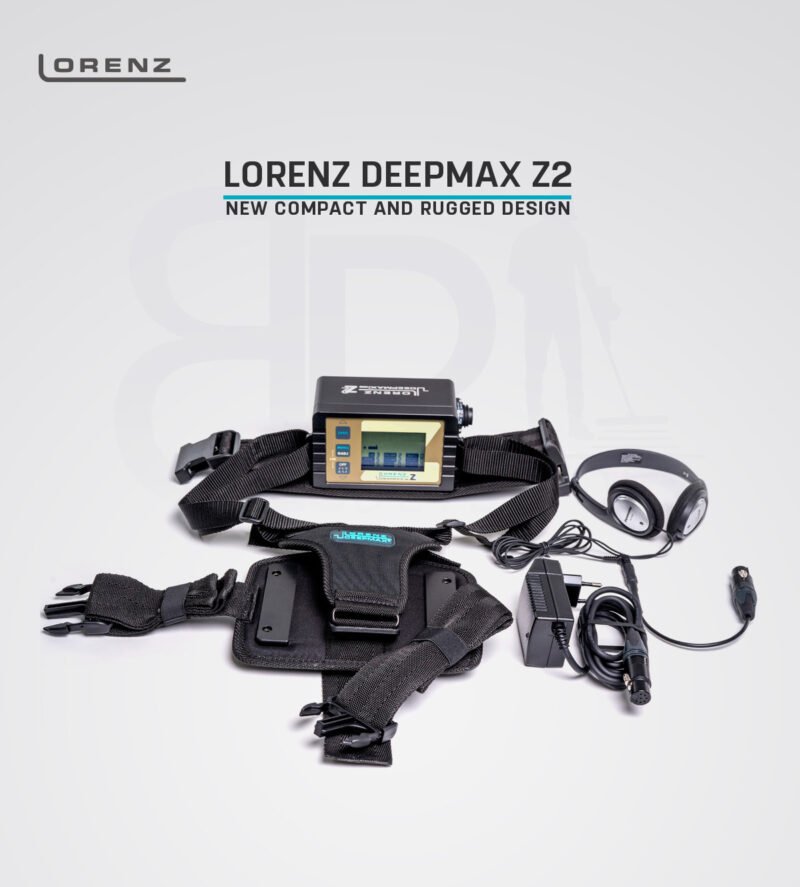Treasure hunting and underground exploration have come a long way from the days of simple tools and guesswork. Today, professionals and enthusiasts rely on advanced detectors that use sophisticated technology to uncover what lies beneath the surface. While there are many types of detectors available, long-range detectors hold a unique place for those who operate in expansive terrains or environments that are particularly challenging.
Whether you’re exploring arid deserts, rocky mountain ranges, or remote fields, having the right equipment can mean the difference between wasted effort and remarkable discoveries. From my experience researching and testing advanced systems, I’ve seen why long-range models remain a go-to choice for serious explorers.
Understanding the Role of Long-Range Detectors
Long-range detectors are specifically engineered to cover wide distances and penetrate difficult ground conditions. Unlike standard detectors designed for smaller, confined areas, long-range units can identify targets that are buried deep and scattered across large tracts of land.
For those focused on finding valuable metals, gemstones, or underground water sources, a professional gold finder with long-range capabilities is indispensable. It allows users to scan vast areas efficiently without spending days moving inch by inch over the surface. This efficiency is not just about saving time; it’s about maximizing opportunities in environments where energy and resources are limited.
Covering Vast Terrains with Precision
One of the biggest advantages of long-range detectors is their ability to scan broad landscapes quickly. In deserts, for example, walking for hours under intense sun is both exhausting and impractical. Long-range systems allow you to narrow down promising zones before committing to detailed searches.
This ability to cover ground efficiently also benefits teams working in archaeological surveys or geological exploration. Instead of using guesswork, they can rely on detectors to highlight areas with the highest potential, making their operations more targeted and productive.
Adapting to Harsh Environmental Conditions
Harsh environments create challenges that standard detectors struggle to overcome. Highly mineralized soil, rocky landscapes, or extreme weather can cause false signals or disrupt detection accuracy. Long-range detectors are built with stronger signal processing systems and adjustable sensitivity settings, allowing them to perform in conditions where lesser models fail.
For professionals, this reliability is crucial. Imagine spending days in a remote area only to discover your equipment is too sensitive to the ground’s natural mineral content. With advanced long-range detectors, hunters can adjust the machine to adapt to specific soil types, minimizing interference and focusing on real targets.
Depth Capability Beyond the Surface
Depth is another key reason professionals choose long-range systems. Valuable finds such as gold nuggets, relics, or ancient treasures often lie buried far beneath the surface. Shallow-level detectors might help with coins or small artifacts, but long-range models combine powerful sensors with ground-penetrating abilities to reach depths that would otherwise remain untouched.
This makes them especially valuable in regions where treasures have been buried over centuries, often beneath layers of soil, rock, or sand. Professionals who use such equipment gain access to targets that casual hobbyists would never reach.
Efficiency for Professional Treasure Hunters
Treasure hunting in vast or harsh landscapes often requires a combination of patience, endurance, and technology. Long-range detectors make the process more efficient by reducing the physical strain of searching endlessly without results.
For professionals who invest both time and money into expeditions, efficiency is not a luxury—it’s a necessity. Every extra day in the field means more costs, more energy spent, and more logistical challenges. By streamlining the search process, long-range detectors help professionals achieve results without unnecessary delays.
The Balance Between Range and Accuracy
Some might assume that covering greater distances sacrifices accuracy, but modern long-range detectors are designed to maintain precision even at extended ranges. By using advanced algorithms and enhanced discrimination features, they can distinguish between different types of metals and filter out unwanted signals.
This means hunters don’t waste effort on irrelevant targets. Instead, they can focus on signals that align with their goals, whether that’s precious metals, gemstones, or underground cavities.
Real-World Examples of Long-Range Success
In desert explorations, I’ve read accounts of professional hunters who used long-range detectors to identify promising locations kilometers away from their base camp. These signals led them to gold deposits that would have otherwise remained hidden in the vast emptiness.
Similarly, archaeological teams have used long-range models to map ancient burial sites and underground chambers. Instead of damaging historical landscapes with random digs, they could focus on areas most likely to yield meaningful results.
These real-world cases highlight that long-range detection isn’t just about convenience—it’s about uncovering opportunities that standard methods would miss.
Choosing the Right Long-Range Detector
Not all long-range detectors are built the same. Professionals often evaluate models based on depth capacity, environmental adaptability, and target discrimination. While price is an important factor, what matters most is performance in the field.
Before investing, it’s essential to match the detector to the specific environments you’ll be working in. Harsh deserts demand different capabilities compared to mountainous regions or archaeological digs. Brands known for reliability, durability, and professional-grade engineering are usually worth the investment.
Final Thoughts
Long-range detectors are more than just advanced tools; they are essential companions for explorers navigating vast and challenging environments. From their ability to scan large areas quickly to their adaptability in harsh terrains and impressive depth capabilities, these detectors provide professionals with the efficiency and precision they need.
For treasure hunters, archaeologists, or geological explorers, long-range models aren’t about making the job easier—they’re about making the job possible. By combining power with accuracy, they transform challenging landscapes into opportunities for discovery, ensuring that even the most remote or difficult environments can yield extraordinary results.





